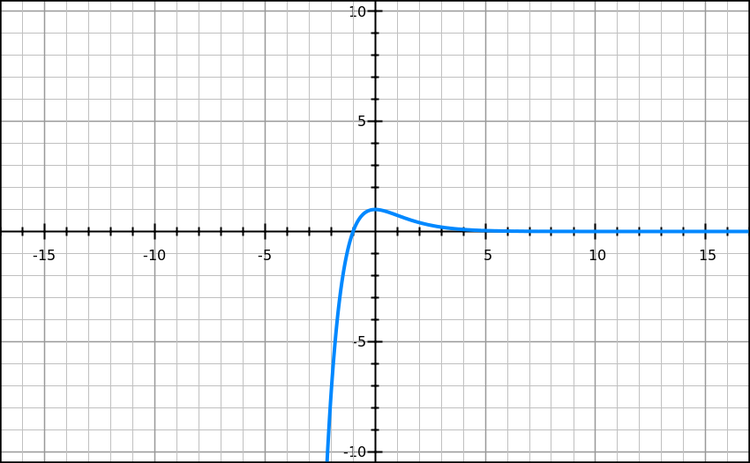Damped oscillations
 Suppose I have an oscillating system, that oscillates under a standard restoring force given by :
Suppose I have an oscillating system, that oscillates under a standard restoring force given by :
F = − k x ,
where x is the displacement and k is the constant of proportionality with k > 0 .
Now suppose it is being damped by a viscous force given by the standard equation of
− b x ˙ = F d r a g .
Suppose that the particle under the forces have mass
m
, and at
t
=
0
we have
x
=
x
0
.
Then what is the
limiting
value of
b
for which the particle will not cross the origin even once?
Details and Assumptions
- The graph of the particle will appear as shown.
- Only consider the positive side, x-axis is time and y-axis displacement
- m=1 kg
- K=1 N/m
- No driving force acts on the object.
The answer is 2.
This section requires Javascript.
You are seeing this because something didn't load right. We suggest you, (a) try
refreshing the page, (b) enabling javascript if it is disabled on your browser and,
finally, (c)
loading the
non-javascript version of this page
. We're sorry about the hassle.
1 solution
Exactly , Because when b falls below 2, we get sinusoidal damped solutions (considering the real class of solutions) which necessarily cross the origin. It is interesting how it oscillates infinite times if b slightly less than 2 and just once when more or equal. Such a harsh discontinuity
Can you tell how you solved it I am stuck
Log in to reply
You don't solve . You guess the solution.If you cannot access the videos reply here.
https://www.youtube.com/watch?v=f8HJ6g1S6OA
https://www.youtube.com/watch?v=XCdPk1pIT1Y
https://www.youtube.com/watch?v=NU5nkbOa1zk
https://www.youtube.com/watch?v=17D4U_r6Gwk
https://www.youtube.com/watch?v=LmFGrx-MSzU
If you want to learn more about Waves and Optics enroll in PHYS201x on EdX.
what do you mean by ODE ? Does This equation has Many Other Solution also ? If So then what is Best Solution for This . ?
I just Use The Standard Solution of this Damping which is given in NCERT, x ( t ) = A 0 e m − b t sin ( ω d t + ϕ ) ω d = ( m k ) − ( 2 m b ) 2
Now For Never crossing X-axis It's Sinusoidal Time Phase Should be constant , Which is only Possible when It's damping frequency should be zero . (or Time period is Infinite) i.e ω d = 0 ⇒ b = 4 m k
Log in to reply
ODE is ordinary differential equation,
yes, inface ur eqn holds when b is less than 2, when equal, another equation holds whose graph i have plotted. when more than 2, still another set of equations hold,, all solutions are however expressible as
C1e^(tr1)+C2e^(tr2) ,
ur way holds when r1 and r2 are imaginary and C1 = C2 (the good form) , then use e^(ix)=cos(x)+isin(x),
F = m x ′ ′ = − k x − b x ′
Solving this second order linear ODE, we get x ( t ) = c 1 e − 2 m t ( b 2 − 4 m k + b ) + c 2 e 2 m t ( b 2 − 4 m k − b )
For the limiting case of not crossing origin, b 2 − 4 m k = 0 or b = 2